History
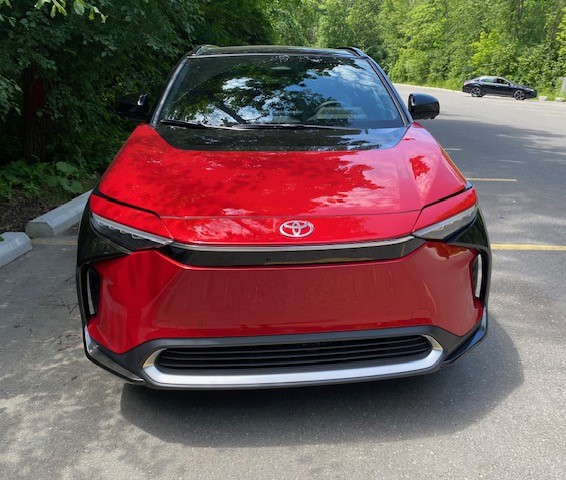
Very large body-coloured front fascia is accented by slim grill and headlights, and a bright-trim-ringed lower air intake
The Toyota bZ4X battery electric vehicle (BEV) is a joint venture with Subaru, which is a distant corporate cousin that markets the similar Solterra. The bZ4X is the first fully electric vehicle offered by Toyota in Canada. Now in its second year, the bZ4X is unchanged for 2024. Since introduction, sales have been limited to British Columbia and Quebec, where significant provincial taxpayer subsidies are available. Toyota Canada is unsure as the whether the car will be offered across Canada at any point. Long delivery delays were common when the car was introduced but delivery times are said to be more reasonable as of the summer of 2024.
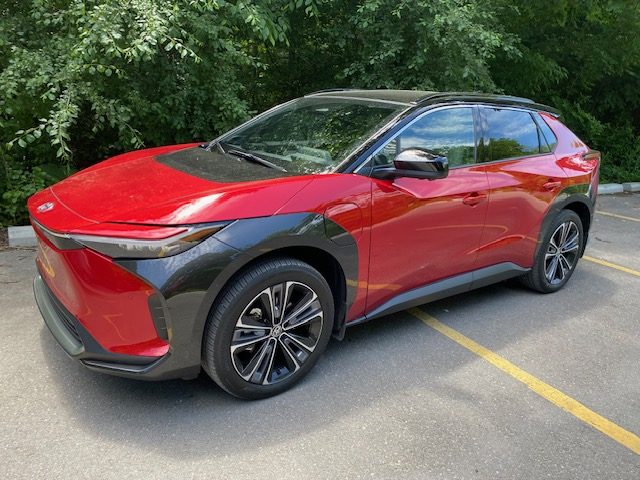
Black accents are used for the wheel arch extensions, roof and the area in front of the windshield

Bizarre wedge-shaped winglets sit atop the rear window. Though it is a hatchback, the bZ4X lacks a rear wiper-washer, a major oversight.
Model Mix
The Bz4X is offered in front-wheel drive and dual-motor all-wheel drive variants. The front-wheel drive version is rated at 201 horsepower. The dual-motor all-wheel drive model produces 214 horsepower, split equally between each axle. The front-wheel variant has a stated range of 406 kilometers, with the dual-motor variant being 367 kilometers.
| Vehicle tested | bZ4X XLE Dual motor with Tech Package |
| Body style | Two-row crossover vehicle |
| Motor | Dual-motor battery electric (214 total system horsepower) |
| Transmission | Single speed |
| MSRP spread | $50,050 to $62,640 |
| Price as tested | $63,750 (XLE including the Tech Package and the $1100 black roof) |
| Range | FWD (406 kms), Dual-motor AWD (367 kms) |
Styling
The front of the bZ4X features a slim grille, wide and shallow headlights and a plain, painted fascia that is underscored by a small, bright-ringed air intake. Large, contrasting colour elements start from the lower edge of the headlights and become wheel arch trims. The same colour trim highlights the rear wheel arches as well. The rear end is punctuated by complex, vaguely triangular taillights with interesting vertical extensions. The rear window is topped by odd, wedged-shaped styling elements that might have been a spoiler if it went across the entirety of the rear window. The rear roofline is quite sloped, which reduces vertical storage height inside. The lack of a wiper-washer on the rear window of a hatchback is a serious oversight.
Interior
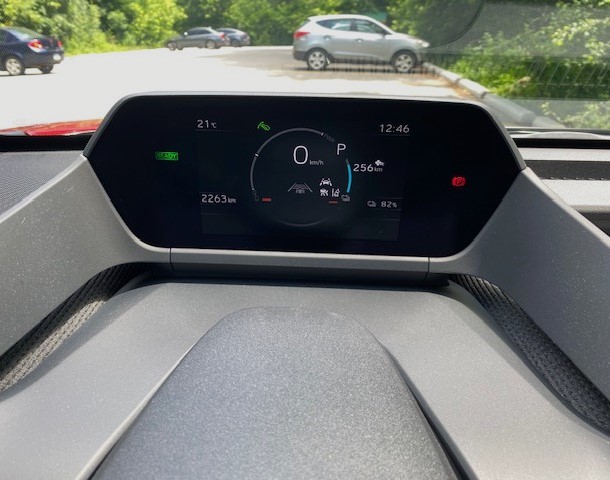
The gauge pod is cantilevered off the dashboard.
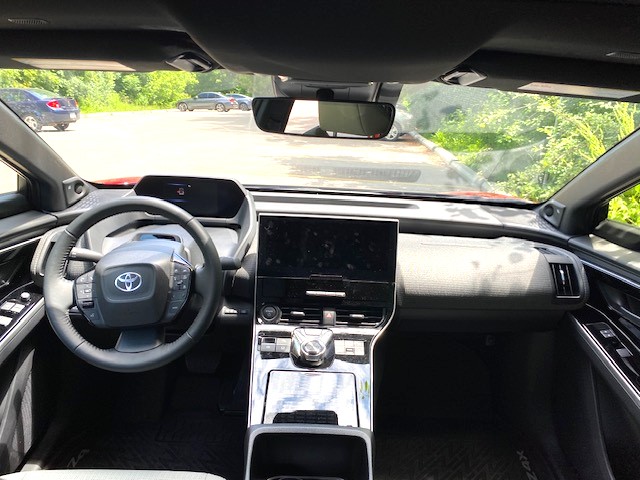
The main part of the dash is covered in a ribbed fabric. The piano black finish on the console causes unwanted reflections
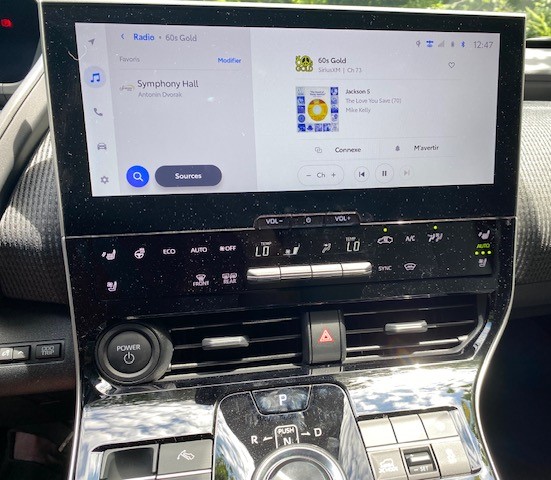
The big screen features straightforward controls
Inside, the driver faces a compact digital readout that is framed by arms cantilevered from the dashboard. The gauges are clear, but when triggered, which is frequently, the driver distraction warning shifts the displays around to show the warning, which is supremely annoying. Owners of other Toyotas, like the Prius Prime, have complained of the same problem. There seems to be no way to turn the driver distraction warning off. The main section of the dashboard is finished in an attractive gray fabric, which is a very 1980s French style accent. Our test vehicle featured white vinyl seats and door accents in an otherwise mostly black cabin. There are numerous piano black accents; the one on the console creates a lot of reflections on sunny days. A large, free-standing screen sits on the centre of the dashboard. Like other Toyotas, there is a touch surface menu to the left of the screen which has reasonable graphics. Below the screen is are touch surfaces for seat heaters, seat chillers, front and rear defrost and recirculation, physical buttons for audio volume and toggles for the dual-zone temperature. fan speed and air distribution controls. A flying bridge centre console, with storage underneath, flows from the base of the screen. Vehicle direction is controlled by a rotary dial, with Park engaged by a button. The console houses a wireless cellphone charger covered by a hinged lid, two cupholders and a big bin under the centre armrest. There are generous door bins in the front doors and bottle holders in the rear doors. Space is ample up front and the front seats are comfortable. Rear seat riders remarked on the supportive seat and the generous legroom as well. Back seat occupants benefit from air vents and seat heaters as well as two USB-C charge ports. Trunk space is regularly-shaped and deep below the window line, but there is a large wheel well intrusion on the right side of the cargo bay. The XLE Tech model tested by the APA features a large, fixed-glass roof panel with a power-operated sunscreen. The JBL-branded audio equipment delivers only adequate sound for a branded system.
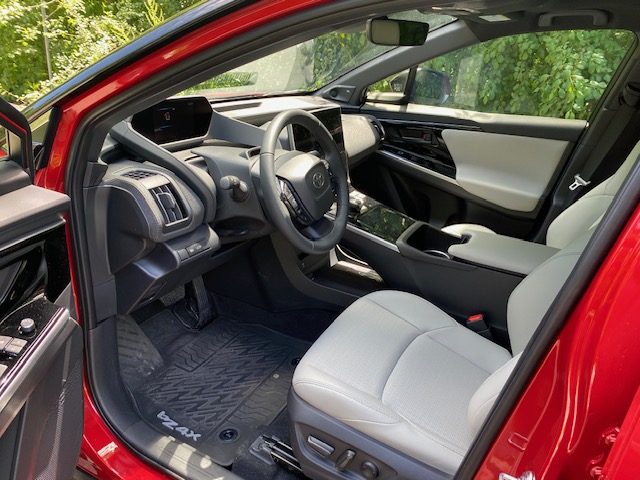
Front occupants enjoy comfortable seats and plenty of space
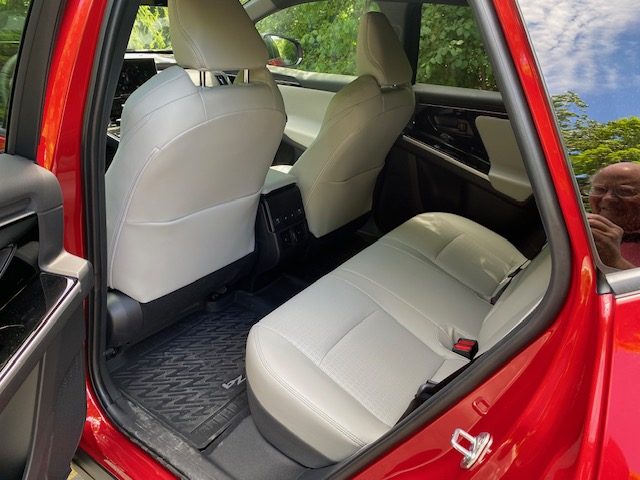
The rear seat is supportive and legroom is plentiful
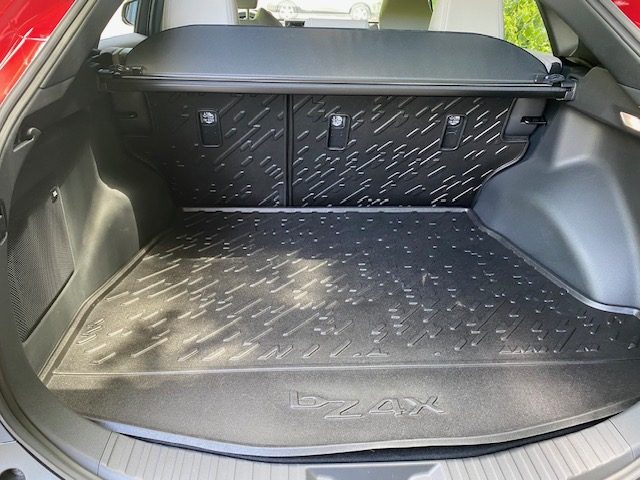
Cargo space is sufficient. The right wheel arch intrudes a lot more than the one on the left
Performance
The bZ4X XLE dual motor is a mature, well-conceived and easy-to-live with car that just happens to be a battery electric vehicle, unlike some battery electric cars that are all about the drive system. The bZ4X furnishes smooth, ample performance with impressive refinement.
The steering of the bZ4X steering is not the last word in feel, but is nicely weighted, quite precise and holds its line well on the highway. Handling is steady, rather than engaging; the ride is quite comfortable, despite the massive 20 inch wheels.
Braking is good, with solid pedal feel. The higher level of regenerative braking available does not deliver full one-pedal driving, as the brakes have to be applied to bring the bZ4X to a complete stop. Annoyingly, the higher level of the regenerative braking needs to be engaged each time the car is started.
Wind noise is nicely suppressed but road noise is noticeable, more so because the powertrain is very quiet.
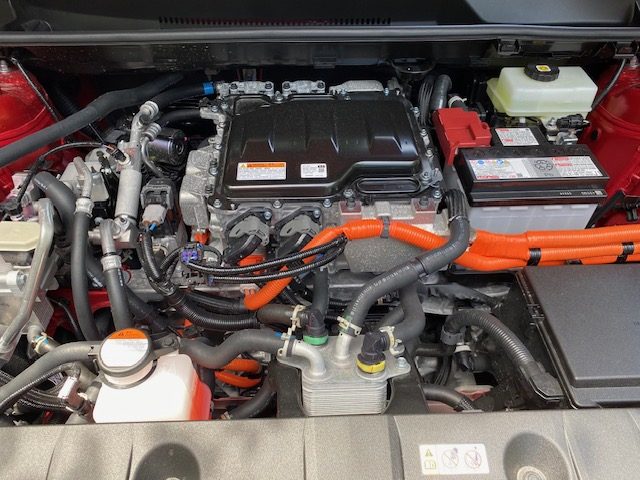
The front electric motor occupies the same place as a conventional engine.
Pricing
The most basic version of the bZ4X is the front-wheel drive LE. Moving up to the XLE brings a dual-motor all-wheel drive system, an auto-dim rearview mirror, a multi-adjustable traction management system, a fixed glass sunroof, rear parking sonar and rear cross traffic, at a reasonable price. The XLE Tech option, which includes a 360 degree camera system, a power rear tailgate, kick-action tailgate opening, heated rear seats, a JBL audio system and enhanced heating, is significantly overpriced. Like most BEVs, predicted resale value of BEVs is poor, so it might be best to lease your bZ4X.
Conclusions
Unlike a number of BEV cars that are interesting and even fun-to-drive, but don’t seem not “quite there yet” due to various faults or oversights, the bZ4X feels light a solid, well-designed, carefully honed car built by an experienced automaker. It is also good to see Toyota elect to build a car with good all-around performance for everyday driving rather than thinking astonishing acceleration is the only criteria for BEV acceptability. The main issues faced by the bZ4X when it was introduced was the lack of availability and distribution that was limited to Quebec and British Columbia. The bZ4X is still offered in only two provinces but the inventory situation has improved and buyers can now be bought without delay. That said, newly-released cars have a limited window of opportunity to establish a presence in the market and the poor initial availability of the bZ4X meant that many potential buyers moved on and won’t be coming back.
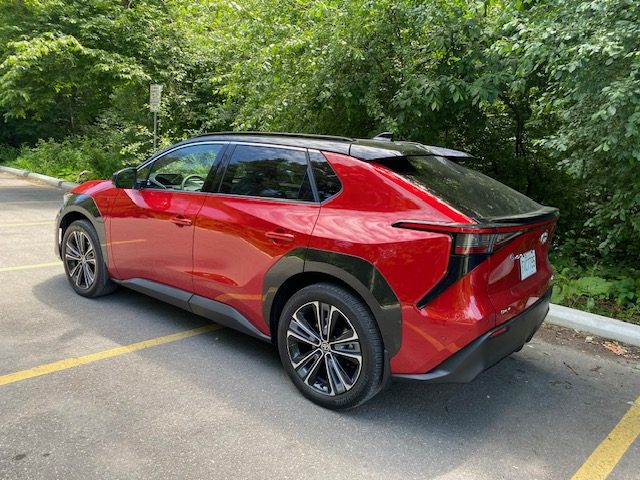
The side profile of the bZ4X is quite clean, despite some odd lines emanating from the mirror and the rear door.
